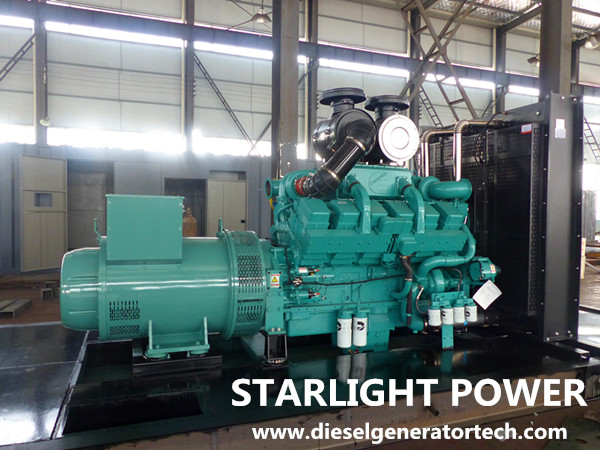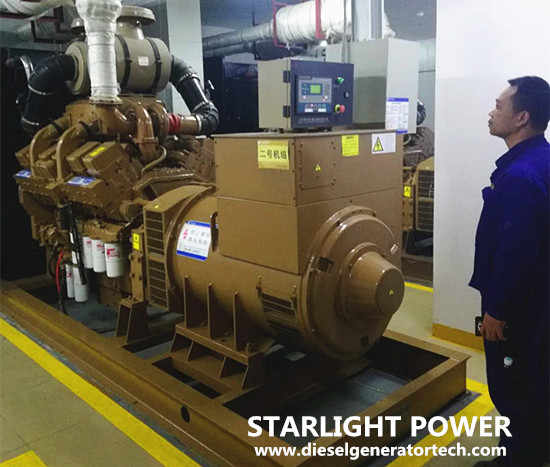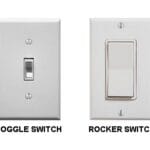To fix a generator under voltage, first check and tighten all electrical connections. Then, adjust the generator’s voltage regulator as necessary.
Generators are essential for providing power in areas where the electrical grid is unavailable or unreliable. An under-voltage issue can significantly impact a generator’s performance, leading to insufficient power supply. Understanding how to troubleshoot and fix this problem is crucial for maintaining continuous and efficient operation.
This guide focuses on practical steps, including examining electrical connections and the voltage regulator, to ensure your generator functions at its optimal level. By addressing under-voltage issues promptly, you can extend the lifespan of your generator and ensure it provides a reliable power source whenever you need it.
Identifying Under Voltage Issues
Generators are lifesavers during power outages. But they can fail too. Under voltage is a common issue. It can damage connected devices. Spotting under voltage early is key. Let’s learn to identify under voltage problems.
Signs Of Under Voltage
- Dimming lights: A classic sign.
- Flickering screens: Monitors and TVs are sensitive.
- Slow operation: Machines may run slower.
- Unexpected shutdowns: Electronics may turn off.
- Alarm signals: Some generators have warning systems.
Measuring Generator Voltage
Checking voltage is simple. Use a multimeter. Here’s how:
- Set the multimeter: To the AC voltage setting.
- Access terminals: Find the generator’s output terminals.
- Test leads: Attach multimeter leads to the terminals.
- Read the multimeter: Compare the reading to the normal range.
- Record results: Note the voltage for records.
Regular checks prevent damage. Stay safe and keep equipment running smoothly.

Credit: www.youtube.com
Safety First: Precautions To Take
When addressing generator under-voltage, safety is crucial. This section provides key safety steps. Follow them to ensure protection.
Disconnecting Power
Always turn off the generator before inspection. This prevents electrical shocks. Use the generator’s main switch for this task.
Wearing Protective Gear
- Wear gloves to protect hands from burns and cuts.
- Goggles are a must to shield eyes from sparks.
- Use ear protection if working near a running generator.
By following these steps, you create a safe environment. This allows for a focus on fixing the under-voltage issue without harm.
Troubleshooting The Generator
Generators are critical for power supply. They can experience under-voltage issues. Proper troubleshooting is essential. It ensures continuous operation. Here are steps to diagnose and fix under-voltage problems.
Inspecting The Alternator
First, inspect the alternator. Look for signs of damage. Check connections and wiring. Loose wires can cause under-voltage. Use a multimeter to test output. Ensure it matches the specifications.
Checking The Voltage Regulator
Next, assess the voltage regulator. This part controls the generator’s voltage. Use a voltmeter to check its performance. Replace it if readings are inconsistent with the norm.
| Step | Action | Expected Outcome |
|---|---|---|
| 1 | Visual Inspection | No physical damage |
| 2 | Test Connections | Secure wiring |
| 3 | Measure Output | Correct voltage level |
| 4 | Voltage Regulator Test | Stable readings |
Follow these steps to ensure your generator functions correctly. Always prioritize safety. Disconnect power before inspection. Seek professional help if necessary.
Common Causes Of Under Voltage
Generators are key in providing power. Yet, they can face issues. One common problem is under voltage. This means the generator produces less electricity than needed. Let’s explore the common causes of this issue.
Faulty Wiring
Faulty wiring is a major cause. It can lead to poor electricity flow. Signs include exposed wires or frequent power losses. Regular checks can help spot and fix these issues early.
Worn Out Brushes
Generators have parts called brushes. They help make electricity. Over time, these brushes can wear out. This leads to less power production. Replacing old brushes can improve performance.
Defective Avr
The Automatic Voltage Regulator (AVR) controls the generator’s voltage. A broken AVR can cause under voltage. It may need fixing or replacing to solve the problem.
This section provides a summarized table of common causes and solutions for under voltage in generators.
| Cause | Solution |
|---|---|
| Faulty Wiring | Inspect and replace damaged wires. |
| Worn Out Brushes | Replace old brushes. |
| Defective AVR | Repair or replace the AVR. |
- Check wires regularly.
- Monitor brushes for wear.
- Test the AVR often.
By understanding these causes, fixing under voltage becomes easier. Regular maintenance is key. It helps keep generators running smoothly.
Repair Or Replace Components
When your generator shows under voltage, it’s time to act. Repair or replace parts to fix it. Let’s dive into how to get your generator running right.
Fixing Wiring Issues
Wires can get loose or damaged. This might cause under voltage. Check all wires. Make sure they are tight and in good shape. Replace any bad wires. Use insulated tools to stay safe.
Changing Brushes
Generator brushes wear out over time. They need a check. If they look worn, replace them. New brushes help produce the right voltage. Follow the manual to change brushes safely.
Installing A New Avr
Sometimes, the AVR (Automatic Voltage Regulator) fails. This leads to under voltage. A new AVR can fix this. Turn off the generator. Remove the old AVR. Install a new one. Make sure connections are secure.
- Check connections after installing a new AVR.
- Follow the manual for the right installation steps.

Credit: www.dieselgeneratortech.com
Adjusting The Generator Settings
Generators are vital for reliable power supply. Correct settings ensure optimal performance. Under voltage issues in generators can lead to power disruptions. Adjusting generator settings is crucial for stable output.
Tweaking The Voltage Regulator
Voltage regulators control generator output. A misadjusted regulator causes under voltage. To fix this:
- Turn off the generator.
- Locate the voltage regulator. Refer to the manual.
- Adjust the regulator knob or screw. Increase voltage gradually.
- Monitor voltage output. Use a multimeter.
- Adjust until the correct voltage is achieved.
- Turn on the generator. Check the voltage stability.
Fine-tuning Frequency And Speed
Generator frequency affects voltage levels. To adjust:
- Identify the governor on your generator.
- Adjust the speed control mechanism. This changes frequency.
- Speed must match power requirements.
- Consult the user guide for precise adjustments.
Regular maintenance prevents under voltage problems. Check settings often. Ensure your generator runs smoothly.
Testing The Generator After Repair
After repairing a generator for under-voltage issues, proper testing is crucial. This process ensures the generator works reliably. Testing involves running a load test and monitoring the voltage output. Follow these steps to test your generator effectively.
Running A Load Test
Load tests check the generator’s performance under different loads. To run a load test:
- Connect the generator to a standard load.
- Gradually increase the load to the generator’s capacity.
- Observe if the generator maintains stable voltage.
- Check for any unusual noises or vibrations.
Monitoring Voltage Output
Monitoring the voltage output is vital. Use a multimeter to track the voltage. Perform these steps:
- Turn on the generator.
- Attach the multimeter to the output terminals.
- Record the voltage at no load and full load.
- Ensure the voltage stays within the recommended range.
Consistent voltage readings indicate a successful repair. If readings fluctuate, further adjustments may be needed.
Maintenance Tips To Prevent Future Issues
Generators are vital for power supply. Under voltage issues can cause serious disruptions. Regular maintenance helps prevent these problems. Below are essential tips for maintaining your generator.
Regular Inspection Schedule
Consistent check-ups keep generators in top shape. Set a calendar for routine inspections. This includes:
- Visual checks for wear and tear.
- Testing output voltage levels.
- Inspecting fuel and oil for contaminants.
Professional services may spot problems early. They ensure smooth operation.
Proper Storage Practices
Correct storage extends generator life. Keep your generator in a dry, clean area. Moisture and dirt cause damage. Follow these steps:
- Run the generator every few months.
- Drain fuel before long-term storage.
- Keep batteries charged and terminals clean.
These actions prevent under voltage issues. They save on repair costs too.

Credit: www.dieselgeneratortech.com
Frequently Asked Questions
What Causes Generator Under Voltage Issues?
Generator under voltage can be due to a variety of causes, including a faulty alternator, incorrect settings on the AVR (Automatic Voltage Regulator), or an overloaded generator that exceeds its capacity.
How Can I Diagnose Under Voltage In Generators?
Diagnosing under voltage requires checking the generator’s output with a voltmeter, inspecting the AVR settings, and ensuring there are no overloads or loose connections affecting the generator’s performance.
What Are The Steps To Fix Generator Under Voltage?
To fix generator under voltage, first reset the AVR, reduce the load on the generator if it’s overloaded, check all electrical connections, and if necessary, replace any faulty components.
Can Regular Maintenance Prevent Under Voltage?
Yes, regular maintenance, including checking the AVR settings, testing the electrical output, and ensuring the generator isn’t overloaded, can prevent under voltage problems.
Is It Safe To Adjust The Avr Myself?
Adjusting the AVR yourself is safe if you follow the manufacturer’s guidelines and take necessary safety precautions, but if unsure, it’s best to consult a professional.
Conclusion
Addressing generator under voltage issues can be straightforward with the right approach. Ensure regular maintenance, inspect components, and consult professionals when in doubt. Your generator’s longevity and performance depend on these vital steps. Stay prepared and your power supply will remain reliable and efficient.




